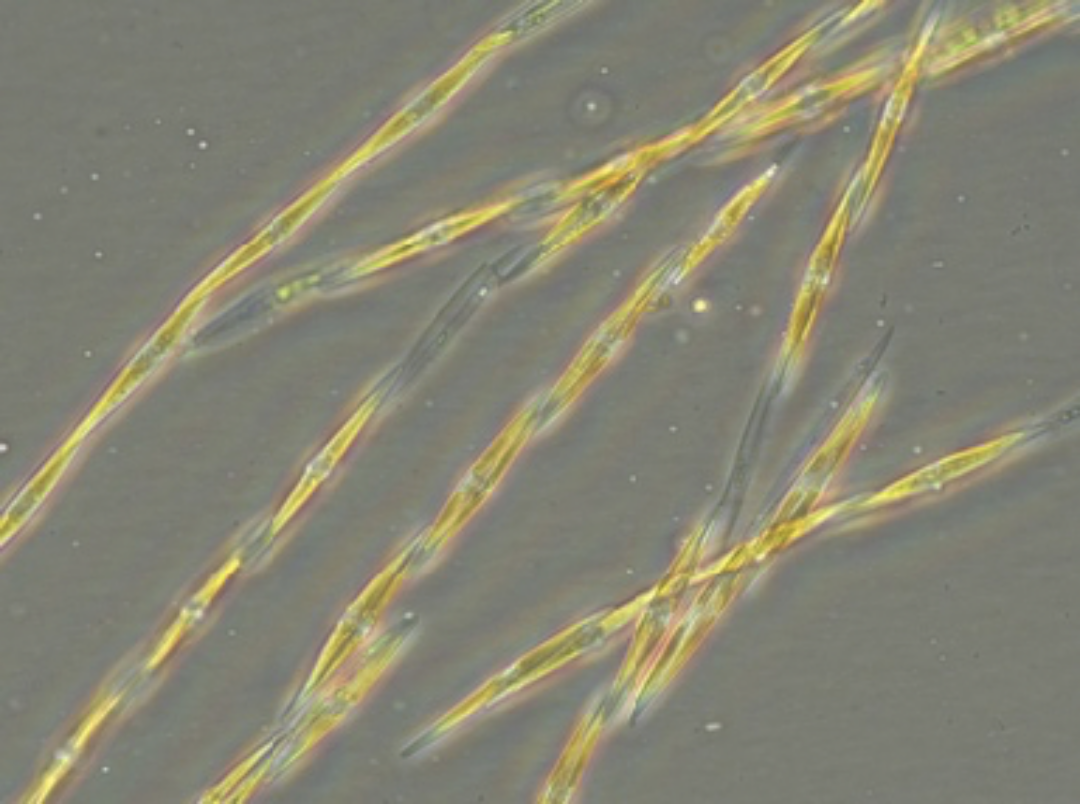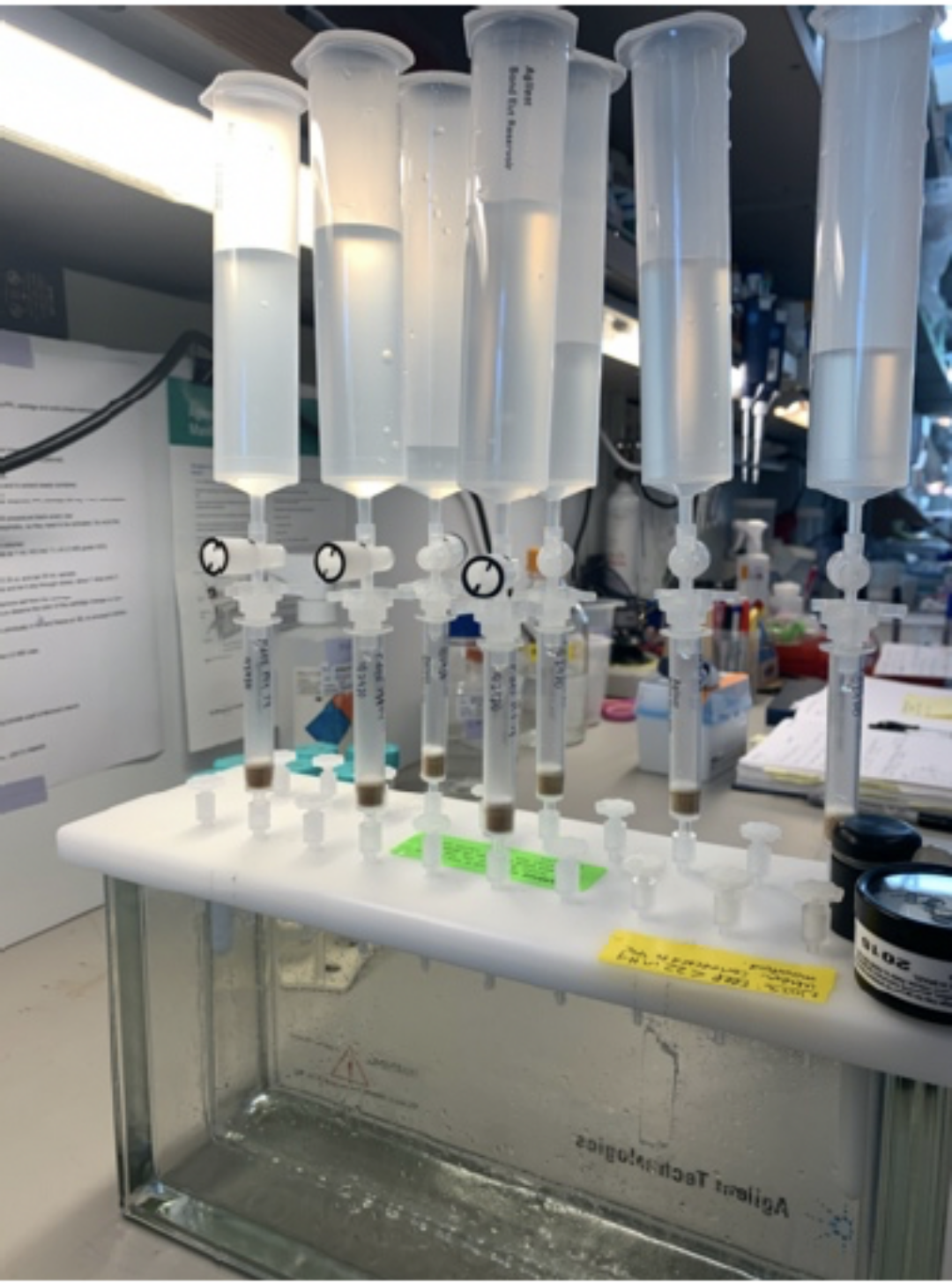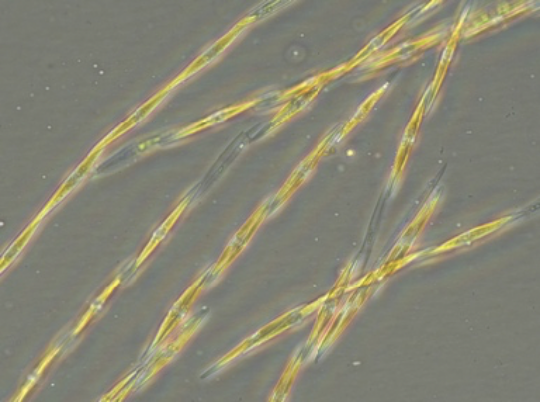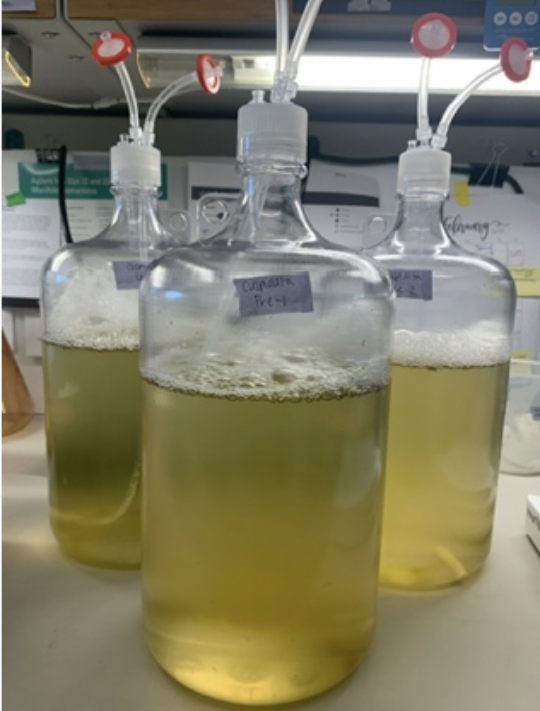Initial glimpse into genetics controlling toxic domoic acid production in Pseudo-nitzschia
Pseudo-nitzschia is a type of phytoplankton that grows in coastal waters. Blooms of Pseudo-nitzschia often produce domoic acid (DA), a potent neurotoxin that accumulates in shellfish and can cause serious illness in marine mammals and humans. Record levels of DA have been detected off the California coast in recent years. University of Southern California (USC) Sea Grant funded a study to understand the diversity of toxin-producing genes in the Pseudo-nitzschia genus (there is a range of DA production among species) and to identify a genetic marker that can accurately and reliably identify toxin-producing Pseudo-nitzschia. This will contribute to the goal of learning when and why these toxic blooms occur to help aquaculture farmers determine safe harvesting times and help natural resource managers protect human health with better monitoring and timely warnings.
Key Results:
- For the first time, the project identified the cluster of genes responsible for domoic acid production
Project Impacts & Application:
- Publication in the journal Science and a press release from the J. Craig Venter Institute
- Presented at the Ocean Sciences Meeting, San Diego, CA; at the National Institutes of Health; and the National Science Foundation’s Centers Oceans and Human Health, Woods Hole, MA
Principal Investigators:
- Bradley Moore, Ph.D., University of California San Diego
- Andrew Allen, Ph.D., University of California San Diego
Funding:
NOAA, 2020-2022
Additional Info and Publications:
- https://allenlab.ucsd.edu/people/andrew-e-allen-associate-professor/
- https://bsmoore.scrippsprofiles.ucsd.edu/
- https://factor.niehs.nih.gov/2018/11/papers/algal
- John K. Brunson, Shaun M. K. Mckinnie, Jonathan R. Chekan, John P. Mccrow, Zachary D. Miles, Erin M. Bertrand, Vincent A. Bielinski, Hanna Luhavaya, Miroslav Oborník, G. Jason Smith David A. Hutchins, Andrew E. Allen, and Bradley S. Moore. Biosynthesis of the neurotoxin domoic acid in a bloom-forming diatom. Science 361,1356-1358 (2018). DOI:10.1126/science.aau0382
Access our Publications Database to view publications from this project or other related topics
Figure 1: Experimental design of systems biology analysis of Pseudo-nitzschia australis.

Pseudo-nitzschia australis under the microscope.

Pseudo-nitzschia cuspidata growth experiment pre-cultures.

Metabolome molecular networking of six Pseudo-nitzschia species generated using GNPS reveals differential species-level metabolome, highlighting intermediates to domoic acid toxin production.





